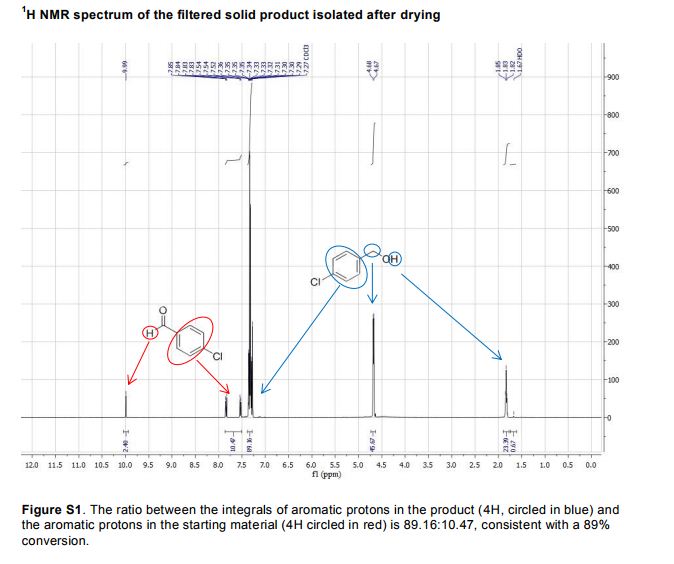

In this work the application of green chemistry principles such as process intensification and the replacement of reagents and solvents to more benign alternatives were coupled with the advantages of continuous manufacturing. The reduction of lipophilic aromatic aldehydes using an aqueous alkaline solution of NaBH4 was achieved by means of mechanical shearing and kneading provided by a custom-made batch reactor at the lab scale and a twin screw extruder at the kilo scale. The process was run continuously for 17 min to yield 1.41 kg of product (89% purity). The benefits of running the process in a continuous manner instead a conventional fed-batch mode were discussed in terms of both environmental and economic factors.
Screwing NaBH4 through a Barrel without a Bang: A Kneaded Alternative to Fed-Batch Carbonyl Reductions
Institute of Chemical and Engineering Sciences, 1 Pesek Road, 627833, Jurong Island, Singapore
Org. Process Res. Dev., Article ASAP
DOI: 10.1021/acs.oprd.7b00107
*E-mail: isoniva@ices.a-star.edu.sg.


Institute of Chemical and Engineering Sciences, 1 Pesek Road, 627833, Jurong Island, Singapore

The chemical industry has been a major part of the Singapore economy for many years, based on a strong foundation as a major oil refining centre with a long history, and strategically placed at the heart of the Asia - Pacific region. In recent years the pharmaceuticals industry has also seen major growth, so that chemistry and chemical engineering science now make a very significant contribution to Singapore's economy.
In order to strengthen this position and to foster future development to grow from dependence solely on manufacturing to secure a more knowledge dependant, high tech research and development based business environment, Agency for Science, Technology and Research (A*STAR) and Economic Development Board (EDB) looked at how to bolster the local science and technology base. As a result, the Institute of Chemical and Engineering Sciences (ICES) came into being, to provide highly trained R&D manpower, to establish a strong science base and to develop technology and infrastructure to support future growth.
Starting from a small centre in the National University of Singapore (NUS), ICES was established as an autonomous national research institute under A*STAR on October 1st 2002. Since that time, we have grown rapidly. We have established world leading laboratories, pilot facilities, and the necessary infrastructure to carry out a world class research programme in chemistry and chemical engineering sciences. We have the capability to cover the range of activities from exploratory research to process development, optimisation and problem solving. We can go from very small lab scale right to kg and pilot scale in one organisation, with all of the necessary skills directly at hand and integrated into a project oriented environment.
///////////

Your blog is well written and helpful to everyone. Thank you for sharing it with us.
ReplyDelete